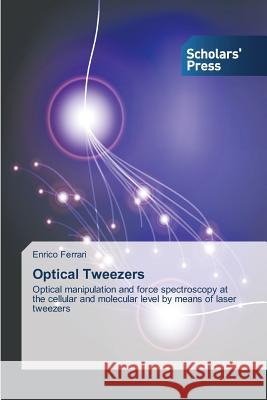Optical Tweezers » książka
Optical Tweezers
ISBN-13: 9783639704563 / Angielski / Miękka / 2013 / 176 str.
Laser manipulation applies to particles like atoms, large molecules and small dielectric objects, in the size range of tens of nanometers to tens of micrometers. Optical manipulation also applies to particles of biological interest like viruses, living cells and organelles within a cell, thus having a major impact in many aspects of biology in which contact-free manipulation is required. The dynamic manipulation of arrays of trapped objects extends the possible applications: here the manipulation of two and three dimensional particles arrays for applications in cell sorting, tissue engineering and mechano-transduction is reported. The book also describes the combination of optical tweezers with Raman spectroscopy for the study of human red blood cells and with synchrotron radiation for structural studies of liposomes. Beside manipulation, optical tweezers have an important role as a tool for measuring weak forces and interactions. Here an antigen-antibody force spectroscopy assay for kinetic measurements is reported, together with force studies on neurons, with the aim of understanding their differentiation process.
Laser manipulation applies to particles like atoms, large molecules and small dielectric objects, in the size range of tens of nanometers to tens of micrometers. Optical manipulation also applies to particles of biological interest like viruses, living cells and organelles within a cell, thus having a major impact in many aspects of biology in which contact-free manipulation is required. The dynamic manipulation of arrays of trapped objects extends the possible applications: here the manipulation of two and three dimensional particles arrays for applications in cell sorting, tissue engineering and mechano-transduction is reported. The book also describes the combination of optical tweezers with Raman spectroscopy for the study of human red blood cells and with synchrotron radiation for structural studies of liposomes. Beside manipulation, optical tweezers have an important role as a tool for measuring weak forces and interactions. Here an antigen-antibody force spectroscopy assay for kinetic measurements is reported, together with force studies on neurons, with the aim of understanding their differentiation process.











